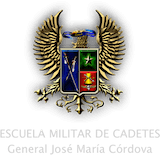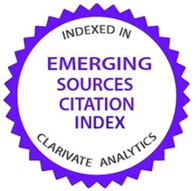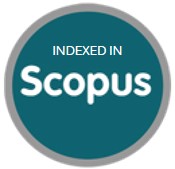Comparación del estadio de cambio para la actividad física y para el ejercicio físico entre universitarios brasileños y catalanes
DOI:
https://doi.org/10.21830/19006586.192Palabras clave:
estadios de cambio, actividad física, ejercicio físico, modelo transteóricoResumen
El modelo transteórico se ha utilizado en el campo de la actividad física y el ejercicio físico especialmente con su instrumento cuestionario estadio de cambio. Son pocas las investigaciones sobre la aplicación del modelo en estudios transculturales. El objetivo de esta investigación es verificar la capacidad de clasificación del Auto-informe del Estadio de Cambio para a la Actividad Física (AECAF) y el ejercicio físico (AECEF) así como realizar un análisis transcultural entre universitarios brasileños y catalanes. El diseño corresponde a un modelo descriptivo correlacional. Se analizaron 250 estudiantes catalanes y 250 estudiantes brasileños. Se hallaron los siguientes resultados: predominó la inactividad entre los participantes del estudio, los cuales se ubicaron en los estadios de pre-contemplación, contemplación y preparación, tanto para la actividad física como para el ejercicio físico. A manera de conclusión, se encontraron diferencias significativas según el origen, género y edad, respecto a las diversas categorías del estadio de cambio para la actividad física, mientras que para el ejercicio físico se hallaron diferencias significativas según origen, género y edad. Los resultados evidenciaron la capacidad de clasificación del cuestionario sobre el estadio de cambio para la actividad física y el cuestionario estadio de cambio para el ejercicio físico en la lengua castellana y portuguesa.Descargas
Referencias bibliográficas
Armstrong, C.A., Sallis, J.F., & Hovell, M.F. (1993). Stage of Change, self - efficacy, and the Adoption of vigorous Exercise: a Prospective Analysis. Journal of Sports and Exercise Psychology 15, 390402.
https://doi.org/10.1123/jsep.15.4.390
Banville, D., Desorsiers, P., Genet-Volet, Y. (2000). Translating Questionnaires and Inventories using a cross cultural translating Technique; Journal of Teaching in Psysical Education 19, 374387.
https://doi.org/10.1123/jtpe.19.3.374
Blissmer, B. & McAuley, E. (2002). Testing the Requirements of stages of physical Activity among Adults: the comparative Effectiveness of stages-matched, mismatched, standard Care, and control Interventions. Annals of Behavioral Medicine 24 181-189.
https://doi.org/10.1207/S15324796ABM2403_03
Booth, M.L., Macaskill, P., Owen, M.N., Oldenburg, B., Marcus, B.H., & Bauman, A. (1993). Population Prevalence and correlates of stage of Change in physical Activity. Health Education Quarterly 20, 431-440.
https://doi.org/10.1177/109019819302000312
PMid:8307765
Buckworth, L.S., & Wallace. (2002). Application of the transtheoretical model to physically active adults. Joumal Sports Medicine and Physical Fitness 42, 360- 367.
PMid:12094128
Bull World Health Organ. (1995). 73(2), 135–136.
PMid:7743586 PMCid:PMC2486753
Capdevila, Lluís. (2005). Actividad física y estilo de vida saludable. 3era Edición. Girona: Documenta Universitaria.
PMCid:PMC540234
Capdevila, Lluís., & Losilla, J.M. (2004). Les dones fan menys exercici físic. L'autonoma 170, 13.
Cardinal, B. J., Touminene, K. J., & Rintala, P. (2003). Psychometric Assessment of Finnish of transtheoretical Model Constructs. Intemational Joumal of Behavioral Medicine 10 (1), 31-44.
https://doi.org/10.1207/S15327558IJBM1001_03
Chamorro, A. (1997). Determinantes psicosociales de la práctica de ejercicio físico en un centro penitenciario. Tesis doctoral no publicada, Universidad de Salamanca.
Dannecker, E. A., Heather, A., Hausenblas, D.P., Connaughto., & Lovins, R. (2003). Validation of a Stage of exercise change Questionnaire. Research Quarterly for Exercise and Sport 74(3), 236-247.
https://doi.org/10.1080/02701367.2003.10609088
PMid:14510288
Derisley, J., & Reynolds, S. (2000). The transtheoretical Stage of Change as a Predictor of premature Termination, attendece and allianee in Psychotherapy. British Journal of Clinical Psychology 39 (Pt 4), 371-82.
https://doi.org/10.1348/014466500163374
DiClemente, CC. (1981). Self-efficacy and smoking cessation Maintence: A preliminary Report. Cognitive Therapy and Research 5, 175 -187.
https://doi.org/10.1007/BF01172525
DiClemente, CC. (1986). Self - efficacy and the addictive Behaviors. Joumal of Social and Clinical Psychology 4, 303 -315.
https://doi.org/10.1521/jscp.1986.4.3.302
DiClemente, CC., Prochaska, J.O., Fairhurst, S., Velicer, W.F., Rossi, J.S., & Velasquez, M. (1991). The process of smoking cessation: An Analysis of precontemplation, Contemplation and Contemplation. Joumal of Consulting and Clinical Psychology 59, 295-304.
https://doi.org/10.1037/0022-006X.59.2.295
Dishman, R. K. (1994). Advances in exercise Adherence. Champaing, IL:Human Kinetics.
Fox, Kenneth R. (1997). The physical self: From Motivation to Well Being: Kennth R. The United Stated of America. Fox Editor.
GiII, Diana. (2000). Psichological Dynamics of Sport and Exercise. Unites States of America: Human Kinetics.
Gómez, M.C. (2000). La búsqueda de la permanencia en la actividad física. Trabajo monográfico no publicado, Centro Universitario das Facultades. Metropolitanas Unidas. Centro de Pesquisas e Pós Graduação - CPPG.
Gorely, T., Bruce,D. (2000). A 6-month Investigation of exercise Adoption from the contemplation Stage of the transtheoretical Model. Psychology of Sport and Exercise 1, 89-101.
https://doi.org/10.1016/S1469-0292(00)00012-1
Habib, S., Morrissey, S.A. & Helmes, E. (2003). Readines to adopt a self -management Approach of change Model in a non-pain -clinic Sample. Pain 104, 83-290.
https://doi.org/10.1016/S0304-3959(03)00016-2
Herrick, AB., Stone, W.J., & Mettler, M.M. (1997). Stage of Change, dicisional Balance and selfefficacy across four health Behaviors in a worksite Environment. American Joumal of Health Promotion 12, 49-56.
https://doi.org/10.4278/0890-1171-12.1.49
Horowitz, S.M. (2003). Applying the transtheoretical Model to pregnancy and STD Prevention: a Review of the Literature. American Joumal of Health Promotion 17 (5), 304 -28.
https://doi.org/10.4278/0890-1171-17.5.304
Hulton, L.J. (2001). The Application of the Transtheoretical Model of Change to adolescent sexual decision-Making. Issues in Comprehensive Pediatric Nursing 24(2), 95-115.
https://doi.org/10.1080/01460860118376
PMid:11817431
Humphreys, AS., Thompson, N.J., Miner, K.R. (1998). Assessment of breastfeeding Intention using the Transtheoretical Model and the Theory of Reasoned Action.
Jensen, M.P., Nielson, W.R, Romano, J.M., Hill, M.L., & Turner, J.A. (2000). Futher Evaluation of the pain Stages of change Questionnaire: is the transtheoretical model of Change useful for Patients with chronic Pain? Pain 86, 255-264.
https://doi.org/10.1016/S0304-3959(00)00257-8
Kearney, J.M., de Graff, C., Damkjaer, S., Engstrom, L.M. (1999). Stage of Change towards physical Activity in a nationally representative Sample in the European Union. Public Health Nutrition 2 (1A), 115 -24.
https://doi.org/10.1017/S1368980099000166
Keefe, F.J., Lefebvre, J.C., Kernes, RD. (2000). Understanding the Adoption of arthritis selfManagement: stage of change Profiles among Arthritis patients. Pain 87(3), 303-313.
https://doi.org/10.1016/S0304-3959(00)00294-3
Kingi, D., Towers, A, Seebeck, R, Flett., & Ross. (2005). Pacific women's Decisions about exercise Adoption: utilising the Stage of exercise adoption Model. The New Zeland Medical Joumal 118, 3139.
Lee, R.E., Nigg, C.R, DiClemente, C.C., & Courneya, K.S. (2001). Validating motivational Readiness for exercise Behaviour with Adolescents. Research Quaterly for Exercise and Sport 4(2), 401-410.
https://doi.org/10.1080/02701367.2001.10608976
PMid:11770789
Levesque, L., Gauvin, L., & Desharnais, R (2003). Manintaining exercise Involvement: the Role of learned Resourcefulness in process of change Use. Psychology of Sport and Exercise 4, 237-253.
https://doi.org/10.1016/S1469-0292(02)00007-9
Lizarraga,S., Ayarra,M.(2005). Entrevista motivacional, Anales, Suplemento 2, 1-14.
Marcus, B. H., Banspach, S.W., Lefebvre, RC., Rossi, J.S., & Abrams, D.B. (1992a). Using the stage of change Model to increase the adoption of physical Activity among community Participants. American Joumal of Health Promotion 11, 424-429.
https://doi.org/10.4278/0890-1171-6.6.424
Marcus, B.H., Bock, B.C., Pinto, B.M., & Clark, M.M. (1998). Exercise Initiation, Adoption, and Maintenance. En AJL. Raalte & B.W. Brewer (Eds), Exploring Sport and Exercise Psychology (s.f., 133-158). Washington, DC: American Psychology Association.
Marcus, B.H., Dube, C.E. (1997). Training Physicians to conduct physical activity Counseling. Preventive Medicine 26 (3), 382-388.
https://doi.org/10.1006/pmed.1997.0158
PMid:9144763
Marcus, B.H., & Forsth, L.H. (2003). Physical activity Intervetion series: Motivating People to be physically Active. Champaign, IL: Human Kinetics.
Marcus, B.H., King, T.K., Clark, M.M., Pinto, B.M., & Bock, B.C. (1996). Theories and Techniques for Promotion physical activity Behaviours. Sports Medicine 22(5), 321-331.
https://doi.org/10.2165/00007256-199622050-00005
PMid:8923649
Martilla, J., Nupponen, R. (2003). Assessing stage of Change for physical Activity: How congruent are parallel Methods? Health Education Research 18 (4), 419 428.
https://doi.org/10.1093/her/cyf034
Matsudo, S.M., Matsudo, V.R, Araújo, T., Andrade, D., Andrade, E., Oliveira, L., & Braggaian, G. (2002). Nivel de atividade física da população do estado de São Paulo: Análise de acordo com o gênero, idade, nível socioeconômico, distribuição geográfica e de conhecimento. Revista Brasileira de Ciências e Movimento 10(4), 41-50.
Matsudo, V.R, Matsudo, S.M., Andrade, D., Araújo, T. i Andrade, E., Oliveira, L. & Braggaian, G. (2002). Promotion of physical Activity in a developing Country: The Agita Sao Paulo experience. Public Health Nutrition 5(1A), 253-261.
https://doi.org/10.1079/PHN2001301
Miilunpalo, S., Nupponen, J., Laitakari, J., Martilla, J., Paronen. (2000). Stages of Change in two Modes of health-enhancing physical Activity: methodological Aspects and promotional Implications. Health Education Research 15 (4), 435- 448.
https://doi.org/10.1093/her/15.4.435
Nigg, C. R. (2005). There is More Stages of Exercise than Just Exercise. Exercise and Sport Sciences Reviews 33(1), 32-35.
PMid:15640718
Nigg, C.R, & Courneya, K.S. (1998). Transtheoretical model: Examining Adolescent Exercise Behavior. Journal of Adolescent Health, 22, 214-224.
https://doi.org/10.1016/S1054-139X(97)00141-9
Nigg, C.R., Coumeya, K.S., Estabrooks, PA. (1997). Maintaining Attendance at Fitness Center: an Application Decision Balance Sheet. Behaviours Medicine 23 (3), 1997.
https://doi.org/10.1080/08964289709596369
Ni-erola i Maymi, J. (2002). Avaliació de la conducta d'actívitat física i de la conducta alimentaria en relació a I'estil de vida saludable. Treball de Recerca de Doctorat dirigít pel Dr. Lluís Capdevíla i Ortis.
Pintanel, S.M., Capdevila, O.L. (1999). Una intervención motivacional para pasar del sedentarismo a la actividad física en mujeres universitarias. Revista de Psicología del Deporte 8, 55-66.
Pinto, S.M., & Marcus, B.H.(1995). Astages of change Approach to understanding College Students physical Activity. Journal of College Health 44,27-31.
https://doi.org/10.1080/07448481.1995.9937506
PMid:7673584
Plontnikoff, R.C., Hotz, S.B., Birkett, N.J., Couneya, K.S. (2001). Exercise and the transteoretical Model: A longitudinal Test of a Population Sample. Preventive Medicine 33, 441-452.
https://doi.org/10.1006/pmed.2001.0914
PMid:11676586
Potvin, L, Nguyen, N.M. (1997). Prevalence of Stages of Change for physical Activity in Rural suburban, and inner- City Communities. Journal of Community Health 22(1), 1-13.
https://doi.org/10.1023/A:1025161522683
PMid:9120043
Prochaska, J.O. (1979). Systems of Psychotherapy: A Transtheoretical Analysis. Homewood, IL. Dorsey Press.
PMid:455889
Prochaska, J.O., DiClemente, C.C. (1982). Transtheoretical Approach: toward a more integrative Model of Change. Psychoterapy: Theory, Research and, Practice 19, 257-288.
Prochaska, J.O., & DiClemente, C.C. (1992). Stages of Change in the Modification of Problem Behavior. Progress in Behavior Modification 28,184-214.
Prochaska, J.O., DiClemente, C.C. (1983). Stages and Processes of self-Change of Smoking: Toward and integrative model of Change. Journal of Consoulting and Clinical Psychology 51, 390-395.
https://doi.org/10.1037/0022-006X.51.3.390
Prochaska, J.O., DiClemente, C.C., & Norcross, J.C. (1992). In Search of how People Change: Applications to Addictive Behaviors. American Psychologist 42, 1102-1113.
https://doi.org/10.1037/0003-066X.47.9.1102
Prochaska, J.O., & Velicer, W.F (1997). The transtheoretical Model of Health Behaviors. American Joumal of Health Promotion 12, 38-40.
https://doi.org/10.4278/0890-1171-12.1.38
Prochaska, J.O., Velicer, W.F., DiClemente, C.C., & Fava, J. (1988). Measuring Processes of Change: Applications to the Cessation of Smoking. Journal of Consulting and Clinical Psychology 56, 520528.
https://doi.org/10.1037/0022-006X.56.4.520
Prochaska, J.O., Velicer, W.F., Rossi, J.S., Goldstein, M.G., Marcus, B.H., Rakowski, W., Fiore, C., Harlow, L.I., Redding, C.A., Rosenbloom, D., & Rossi, SR. (1994). Stages of Change and decisional Balance for twelve Problem Behaviours. Health Psychology, 13, 9-46.
https://doi.org/10.1037/0278-6133.13.1.39
Rejeski, J.W., & Lutes, L. (2000). A group -Mediated Cognitive- Behavioral Intervention for increasing Adherence to Physical Activity in Older Adults. Journal of Applied Biobehavioral Research 5, 47-65.
https://doi.org/10.1111/j.1751-9861.2000.tb00063.x
Riley, T.A., & Fava, J.L. (2003). Stress and transtheoretical Model Indicators of Stress Management Behaviours in HIV-positive Women. Journal of Psychosomatic Research 54 (3), 245-252.
https://doi.org/10.1016/S0022-3999(02)00603-7
Ronda, G., Van Assem, P., Brug, J. (2001). Stage of Change, psychological Factors and awareness of physical activity Levels in The Netherlands. Health Promotion International 16(4), 305-14.
https://doi.org/10.1093/heapro/16.4.305
PMid:11733449
Sallis, J.F., & Howell, M.F. (1990). Determinants of exercise Behaviour. Exercise of Sports Science Reviews 18, 307-30.
https://doi.org/10.1249/00003677-199001000-00014
Sarkin, J.A., Jonhson, S.S., Prochaska, J.O., & Prochaska, J.M. (2001). Applying the transtheoretical Model to regular moderate Exercise in an overweight Population: Validation of Stage of Change Measure. Preventive Medicine 33, 462-469.
https://doi.org/10.1006/pmed.2001.0916
PMid:11676588
Stephens, T. (1998). Physical Activity and mental Health in the United States and Canada: Evidence from Population Surveys. Preventive Medicine 17, 35-47.
https://doi.org/10.1016/0091-7435(88)90070-9
Sternfeld, B. (1992). Cancer and the protective Effect of physical Activity: the epidemiological Evidence. Medical Science Sports Exercise 24(11), 1195-209.
https://doi.org/10.1249/00005768-199211000-00003
Suminski, RR. Petosa, R. (2002). Stages of Change among ethnically diverse College Students. Journal of American College Health 51(2), 26-31.
https://doi.org/10.1080/07448480209596333
https://doi.org/10.1080/07448480209596324
PMid:12222844
Suris, A.M., Trapp, M.C., DiClemente, C.C., & Cousins, J. (1998). Application of Model of Behaviour Change for obesity in Mexican American Women. Additive Behaviors 23 (5), 655- 668.
https://doi.org/10.1016/S0306-4603(98)00012-4
Titze, S., Martín, W., Seile, R., Stonegger, W., & Marti, B. (2001). Effects of a lifestyle physical activity Intervention on Stages of Change and energy Expenditure in sedentary Employees. Psychology Sport and Exercise 2, 103-116.
https://doi.org/10.1016/S1469-0292(00)00016-9
Titze, S., & Stronegger, W. (2002). Deutchsprachige Rekonstruktion der Strategien der Verhaltensanderungnach dem transteore Tiscchen model-analysiert bei Teilnemeerin nen eínes Trauenlaufs. Zoz Preventive 47, 251-261.
Toscano, J. Evandro. (2001). A influência do sedentarismo na prevalência de lombalgia. Revista Brasileira de Medicina do Esporte 7(4), 132-137.
https://doi.org/10.1590/S1517-86922001000400004
Varo, J.J., Martinez, M.A., Estevez, J.I., Kearney, J., & Gibney, M. (2003). Distribution and Determinants of sedentary lifestyles in the European Union. lnternational Joumal of Epidemiology 32, 138-146.
https://doi.org/10.1093/ije/dyg116
Velicer, W. F., DiClemente, C.C., Prochaska, J.O., & Brandenberg, N. (1985). A decisional balance measure for assessing and redisting smoking status. Journal of Personality and Social Psychology 48, 1279-1289.
https://doi.org/10.1037/0022-3514.48.5.1279
Velicer, W. F., Prochaska, J.O., Fava, J.l., Norman, G.J., Redding. (1998). Dynamic typology Clustering within the Stages of Change for Smoking Cessation. Addictive Behaviors 23(2), 139 -53.
https://doi.org/10.1016/S0306-4603(97)00039-7
Velicer, W. F., Prochaska, J.O., Rossi, J.S., DiClemente, C.C. (1996). A criterion measurement Model for health behavior Change. Addictive Behaviors 21(5), 219 -29.
https://doi.org/10.1016/0306-4603(95)00083-6
Vuori, I.M. (2001). Health Benefits of physical Activity with special Reference to interaction with Diet. Public Health Nutrition 4 (2B), 517-28. Review
https://doi.org/10.1079/PHN2001137
Wakui, S., Shimomitsu, T., Odagiri, Y., Inoue, S., Takamiya, T, & Ohya, Y. (2002). Relation of the Stage of Change for exercise Behaviours, self-efficacy, decisional-balance, and diet-related psychobehavioural Factor in young Japanese Women. Journal of Sports Medicine and Physical Fitness 42 (2), 224 -32.
PMid:12032420
Weinberg, R, Gould, D. (1999). Foundations of Sport and Exercise Psychology. Second Edition. Champaign, IL: Human Kinetics.
Woods, C., Mutrie, N; & Scott, M. (2002). Physical activity Intervention: Intervention designed to help sedentary young Adults become Active. Health Education Research 17(4), 451-60.
https://doi.org/10.1093/her/17.4.451
PMid:12197590
Wyse, J., Mercer, T., Asford, B., Buxton,K., & Gleeson, N.(1995). Evidence for the Validity and Utility of Stages of exercise behavior change Scale in young Adults. Health Education Research 10, 365377.
https://doi.org/10.1093/her/10.3.365
Xiao, J.J., O'Neill, B., Prochaska, J.M., Kerbel, C., Brennan, P., & Bristow, B. (2001). Application of the Transtheorical Model of Change to Financial Behavior. Consumer interests Annual 47, 1-9.
Zimmermann-Sloutskis, D., & Martin-Dierner, E (2003). Activé physique et modèle tránsthéorique de changement comparison interculturelle en suisse rapport. Analyser sur la base d'un projet de instit de medicine sociale et preventive de I'Université de Zurichi, 1-61.
Descargas
Publicado
Cómo citar
Número
Sección

| Estadísticas de artículo | |
|---|---|
| Vistas de resúmenes | |
| Vistas de PDF | |
| Descargas de PDF | |
| Vistas de HTML | |
| Otras vistas | |
























